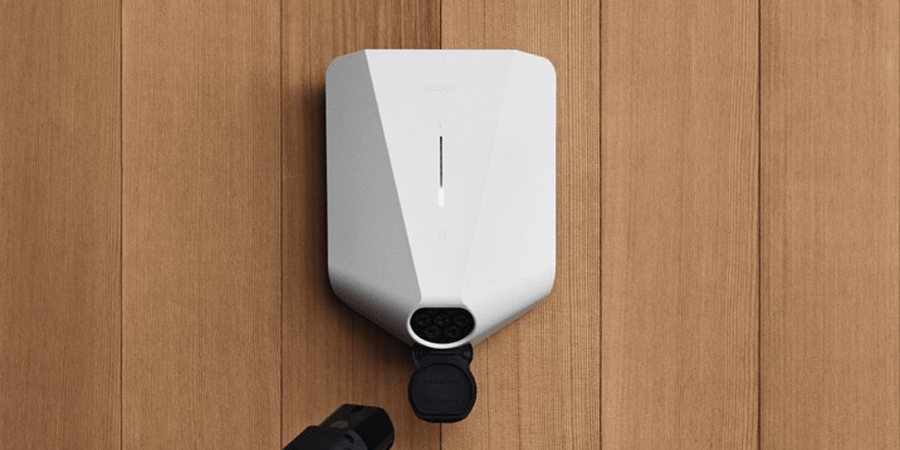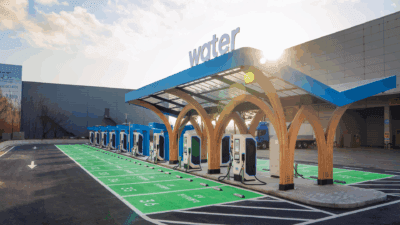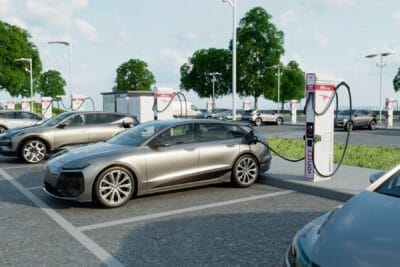Elsälerhetverket imposes sales ban on Easee wall boxes in Sweden
The dispute around Easee wall boxes is starting to read like a nordic noir series. Today, Elsälerhetverket, the Swedish authority for electrical safety, has imposed a sales ban on the models ‘Charge’ and ‘Ready’ with serious consequences for the Norwegian manufacturer.
The sales ban will affect around 100,000 wall boxes Easse has installed in Sweden. Elsälerhetverket now requires that the manufacturer takes back these models from its dealers and rectifies defects in devices that have already been installed.
The sales ban does not come out of the blue. It follows a test of six wall boxes by the Swedish Electrical Safety Authority in February, which revealed numerous safety deficiencies in the wall-mounted charging stations of the Norwegian manufacturer Easee. One of the central problems: Contrary to the declaration, no RCD was installed, according to Elsälerhetverket, which first tested the Easee Home. Since the products ‘Charge’ and ‘Ready’ use the same technology, they are also affected.
Easee had responded to the allegations and considered the failed overvoltage test with the CP pin not applicable in its interpretation of the IEC standard, saying the CP pin was installed so that it could not be touched. And with the RCD, Easee said it does not rely on a separate device mounted on a DIN rail but a system “integrated into the overall design of the charger”. If the built-in sensor detects AC and DC faults, the system triggers and is supposed to immediately cut off the power supply, which in Easee’s interpretation, ensures the function of an RCD.
Elsälerhetverket disagrees. As the authority announced on its website today, it did not follow the Easee interpretation and imposed said sales ban for Sweden on the Easee Home and Easee Charge. There was “no solution with residual current circuit breaker and DC protection that meets the requirements of the standards for which the device is declared”, Elsälerhetverket said.
Earth leakage circuit breaker may not always trip when and how it should
“The manufacturer has used an electronic earth leakage circuit breaker solution instead of an electromechanical one. There is a risk that the earth leakage circuit breaker does not always trip when and as it should,” added Joel Lee Antman, inspector at the Swedish Electrical Safety Authority. A charging station must also have DC protection to ensure the earth leakage circuit breaker works properly. In the opinion of the authority, this is not the case.
About 100,000 of these models have been installed in Sweden. The manufacturer must now take back these wall box models from its dealers and will be obliged to remedy defects in devices that have already been installed. But: For the time being, the decision only applies to Sweden. However, since the standards in question are not national but apply worldwide and Easee does not build wall boxes specifically for Sweden, the issue is likely to also arise in other countries.
What to do with an Easee wall box?
In the case of Sweden, the authority points to the manufacturer to inform customers. Elsälerhetverket won’t give any further recommendations but stresses that it was the manufacturer’s responsibility to remedy the deficiencies.
“We understand that there is concern among private individuals in this matter, but manufacturers who receive this type of negative message are usually quick to meet the requirements,” said Lee Antman.
Easse appeals against the sales ban
So far, however, Easee has lodged an appeal. The company stands by its interpretation of the standards and, thus, the product’s legality. Easee was “firmly convinced that there is no technical or legal basis for such a ban,” the company said. The company also refers to the authority’s report, which states that the Electrical Safety Authority does not believe there is a risk of personal injury or damage to property.
Easee is seeking an injunction against the immediate sales ban. Afterwards, there will be a regular appeal procedure “in which we will once again prove why our chargers are the safest on the market,” so Easee. Such proceedings can take several months, however, which is why the company is seeking to suspend the sales ban by interim injunction for the time being.
“We disagree with the decision and will do everything in our power to protect our customers, partners and employees. Our focus has always been on people and safety,” said founder and CEO Jonas Helmikstøl. “Our customers can load safely as usual and do not have to take any action. We will continue to fight this decision and work towards a greener future with innovative products.”
Incidentally, the authority has not published the entire test of all six chargers. The project should be completed within a few weeks and then published, according to Elsälerhetverket.
Can the Easee argument hold?
However, here it may pay to revisit our exclusive report on the matter, in which an IEC member directly challenged the Easee argument on their “interpretation” of EC standards. Christoph Erni is a member of the committee that develops the international standard for conductive charging systems for EVs (IEC 61851) and the CEO of the Swiss charging infrastructure manufacturer Juice Technology. It is common practice for industry representatives to contribute to the standards. Nevertheless, it is worth noting again that Erni is not only a representative of the ICE but also the head of an Easee competitor.
In his statement, Erni primarily looked at the critical errors in the Easee wall boxes, which he argued failed to fulfil the requirements for the CPO circuit and RCD.
Moreover, he concluded, the Easee argumentation revealed “insufficient technical expertise and a disregard for customer safety on the part of the manufacturer, in which he modifies mandatory standard tests as it sees fit or simply omits them.” Since Easee labelled its stations with a CE mark despite the “deliberate and intentional” non-compliance with safety-relevant standard tests, it was “thus abusive and misleading, legally speaking precisely falsifying documents”, Erni said.
elsakerhetsverket.se, Easee statement via email





1 Comment